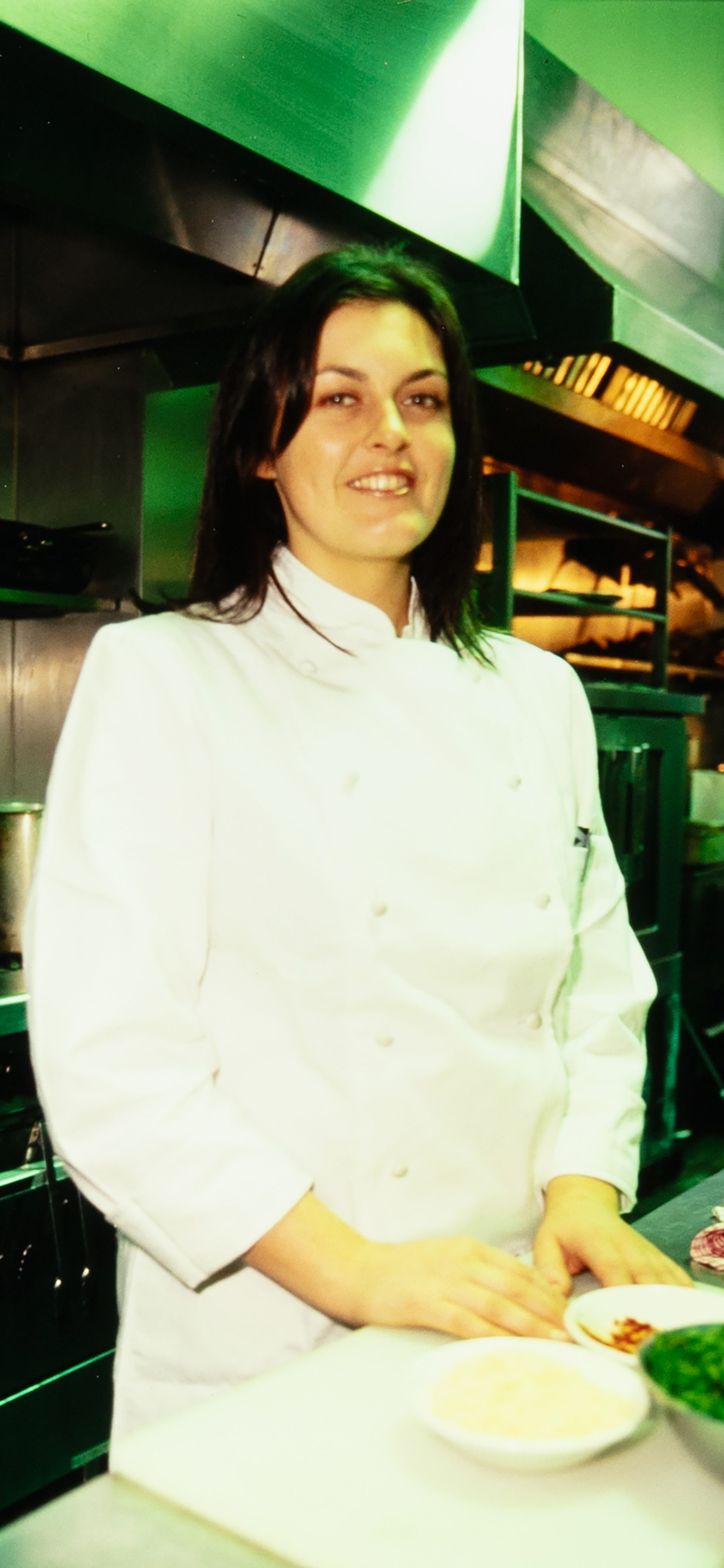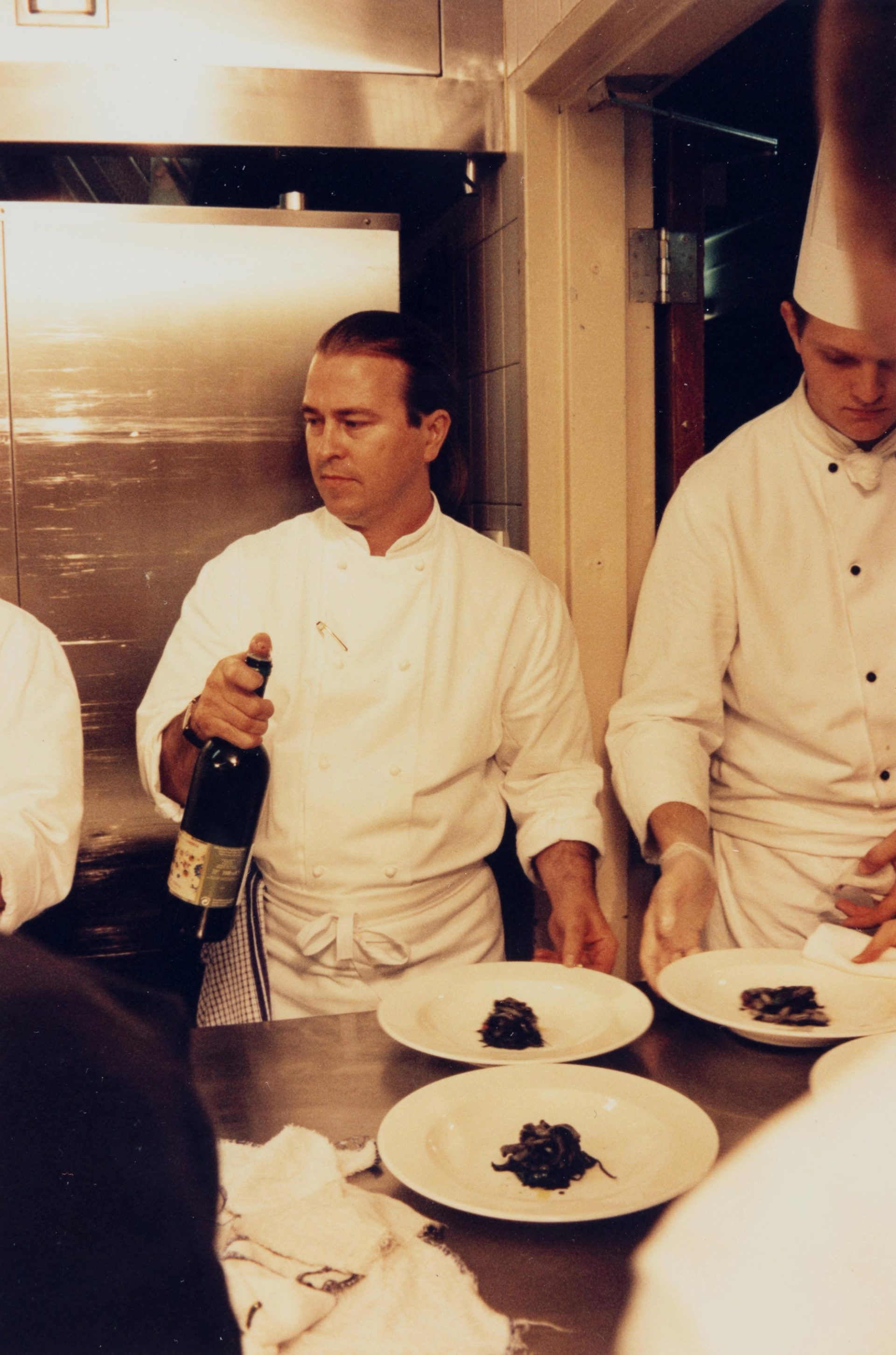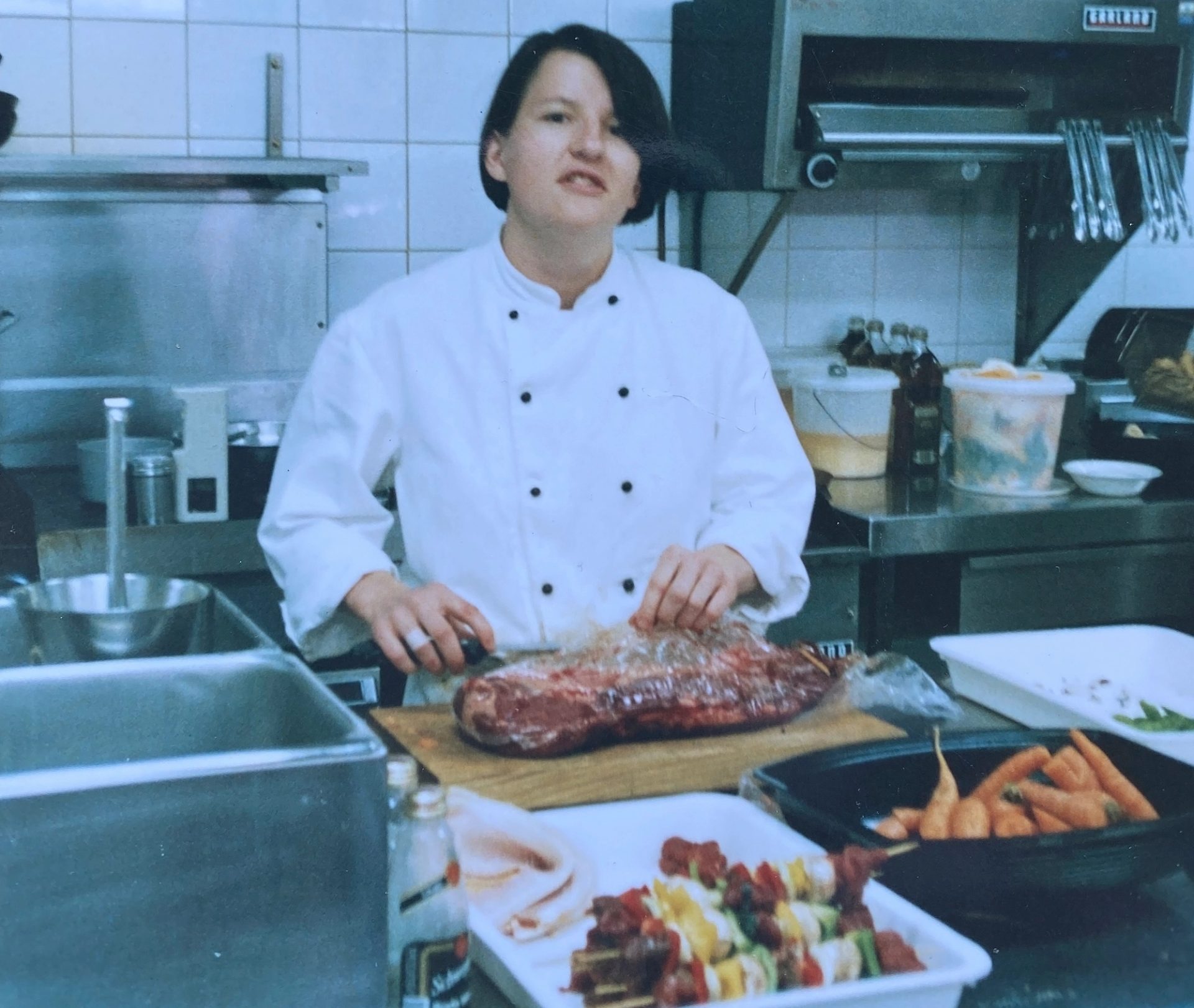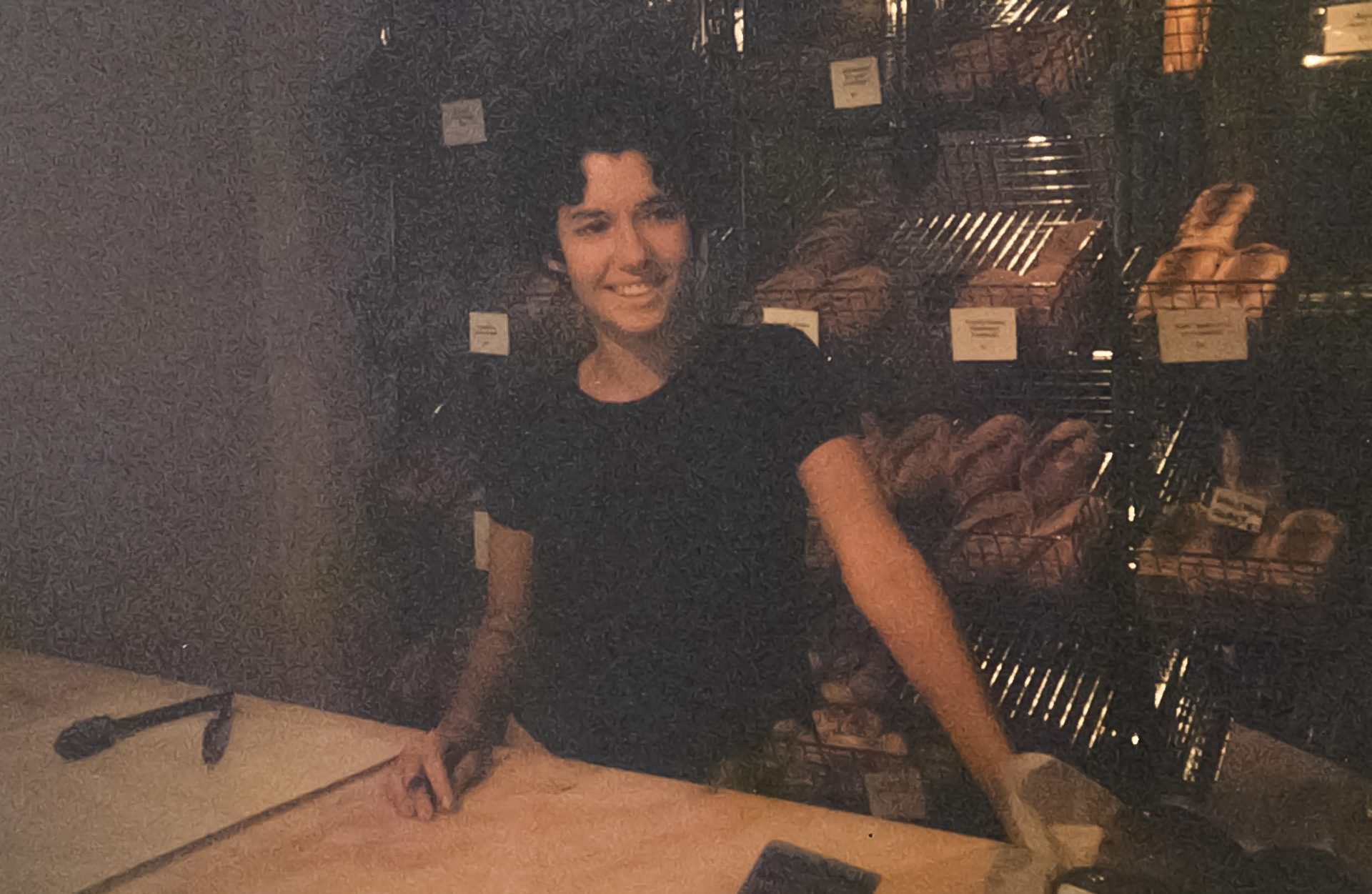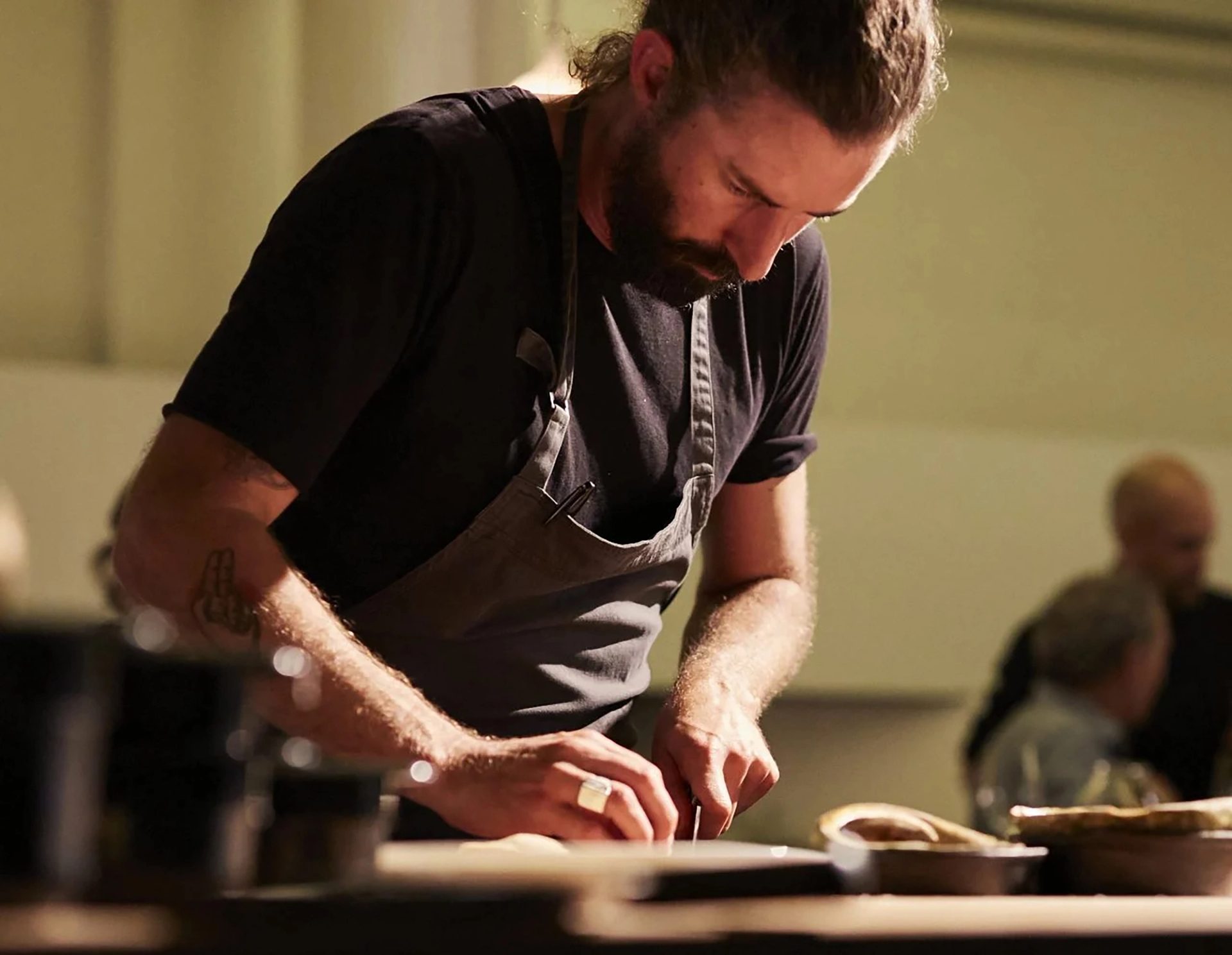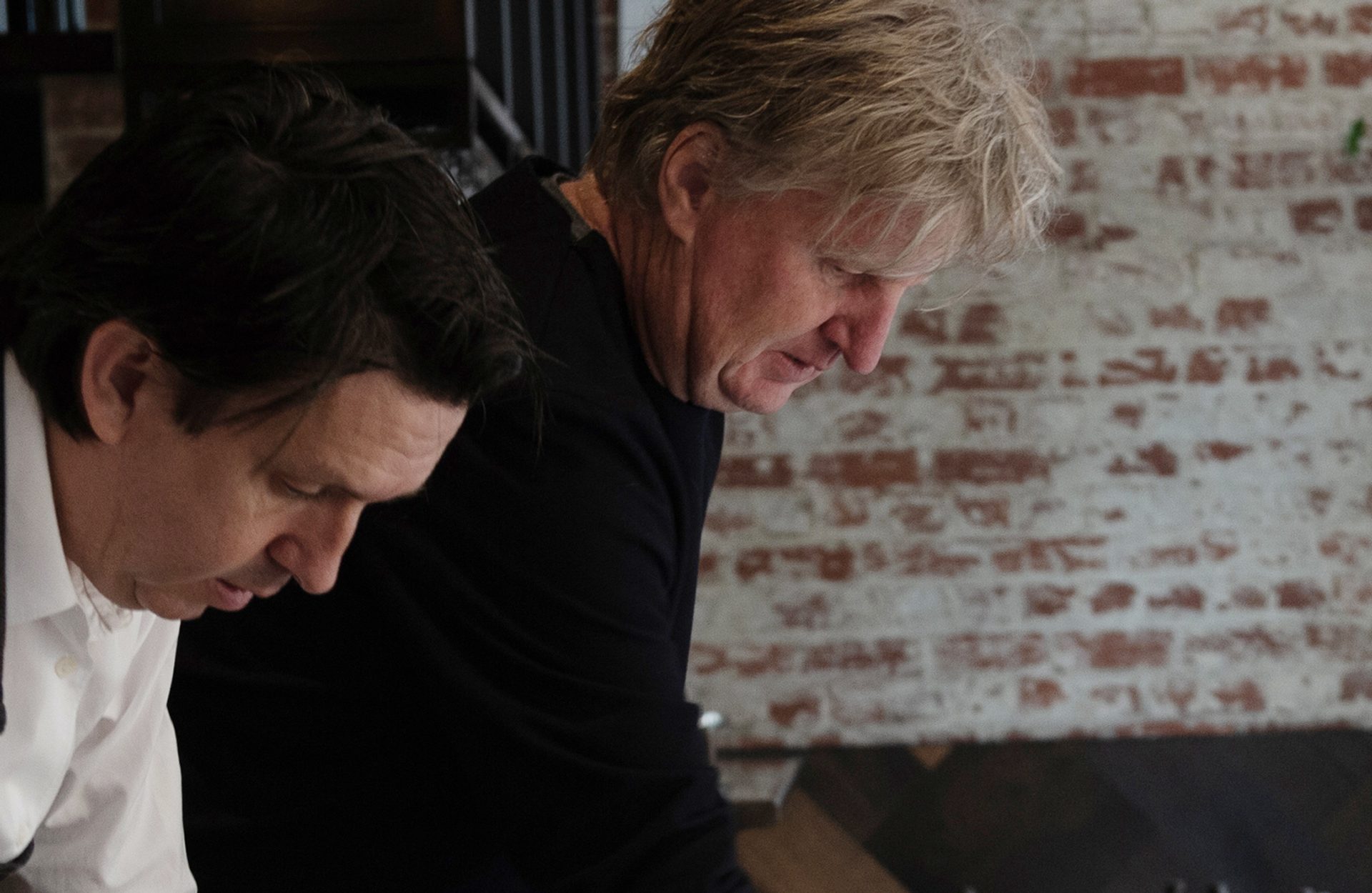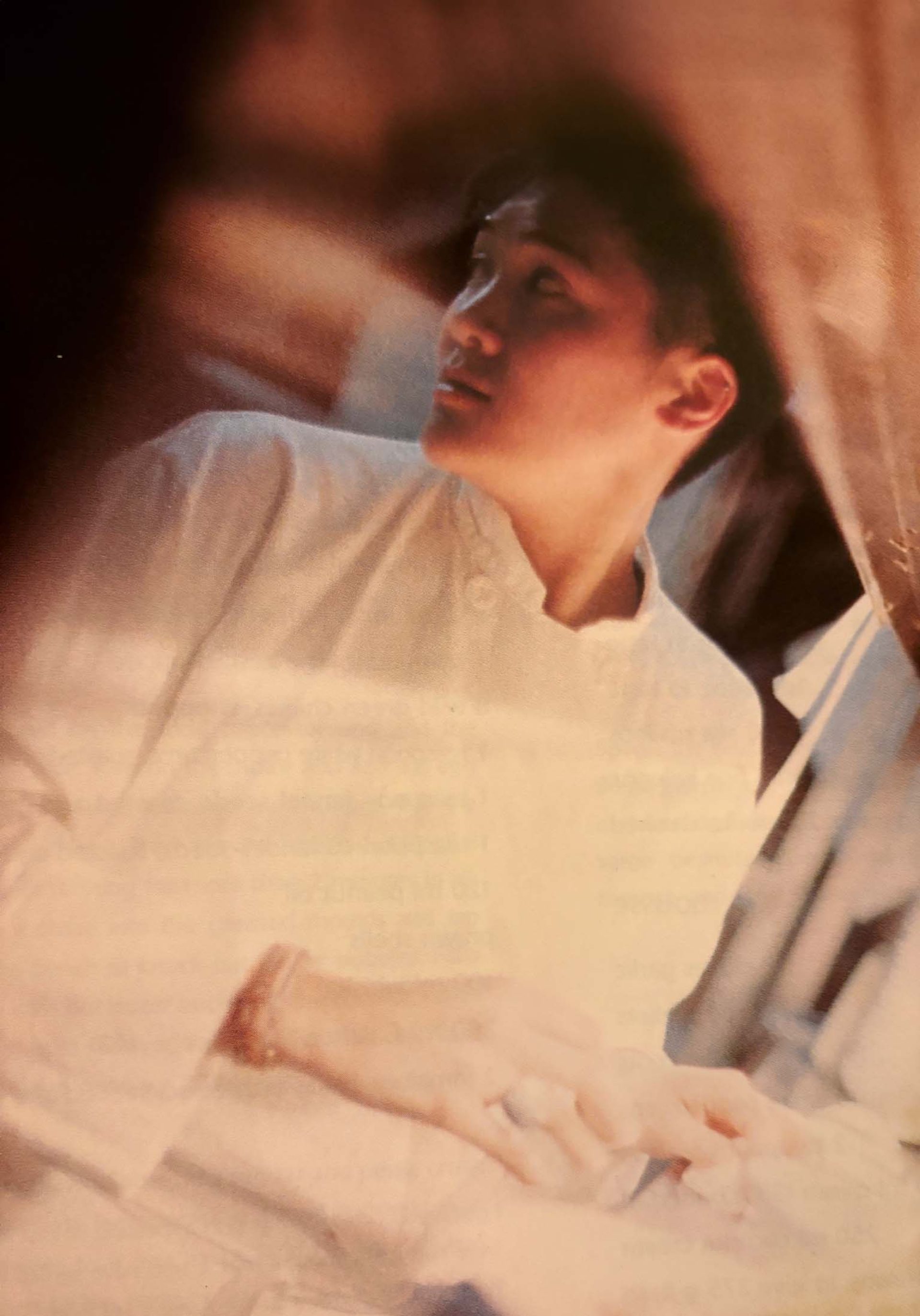Grace and flavour: Karen Martini

Grace and flavour
In this interview for the Australian Culinary Archive Karen Martini reveals how being constantly hungry as a teenager led to a career as a leading chef, writer and passionate teacher of home cooking across all media.
Julie Gibbs Karen, you wrote a menu when you were 15. Tell me about it.
Karen Martini I have fond memories of being constantly hungry, hovering in the kitchen to find out what we were having for dinner. Actually, coercing the decision. The opportunity to do work experience with Jacques Reymond at Mietta’s, a three-hat restaurant, solidified the idea of starting a career in cookery. The bug started in a serious way working in a hierarchy of a kitchen and the symphony of food being made, the formality and the respect for produce. I thought, ‘This is the world for me.’ I was 15-and-a-half, finding an apprenticeship, studying at William Angliss [Institute] and writing that menu. It was one of our first projects: you’re going to work in a restaurant, what’s your menu? Trout amandine, avocado mousse and poached pears.
JG Is that Jacques’s influence in there?
KM Yes. It had a French lean, if you like.
JG What was the trajectory of restaurants that you worked in before you went out and had your own restaurant?
KM After work experience, I wrote to Mietta O’Donnell and asked for a position. She told me, ‘Go back to school. You’re too young.’ I got that from a few different people and so started work at the Austin Hospital, quite a step down from a three-hat restaurant, one could say, but I had my eye on the prize. I progressed to a hatted restaurant, Pourquoi in Albert Park. I was chasing people that really were passionate about what they did and how they positioned themselves in, I suppose, the infantile beginnings of the food environment. Then in 1989 I landed at Tansy’s, a three-hat restaurant. Most terrifying trial day in my entire life. I succeeded, I think, from a point of view of determination and the willingness to learn. I had struck it big.
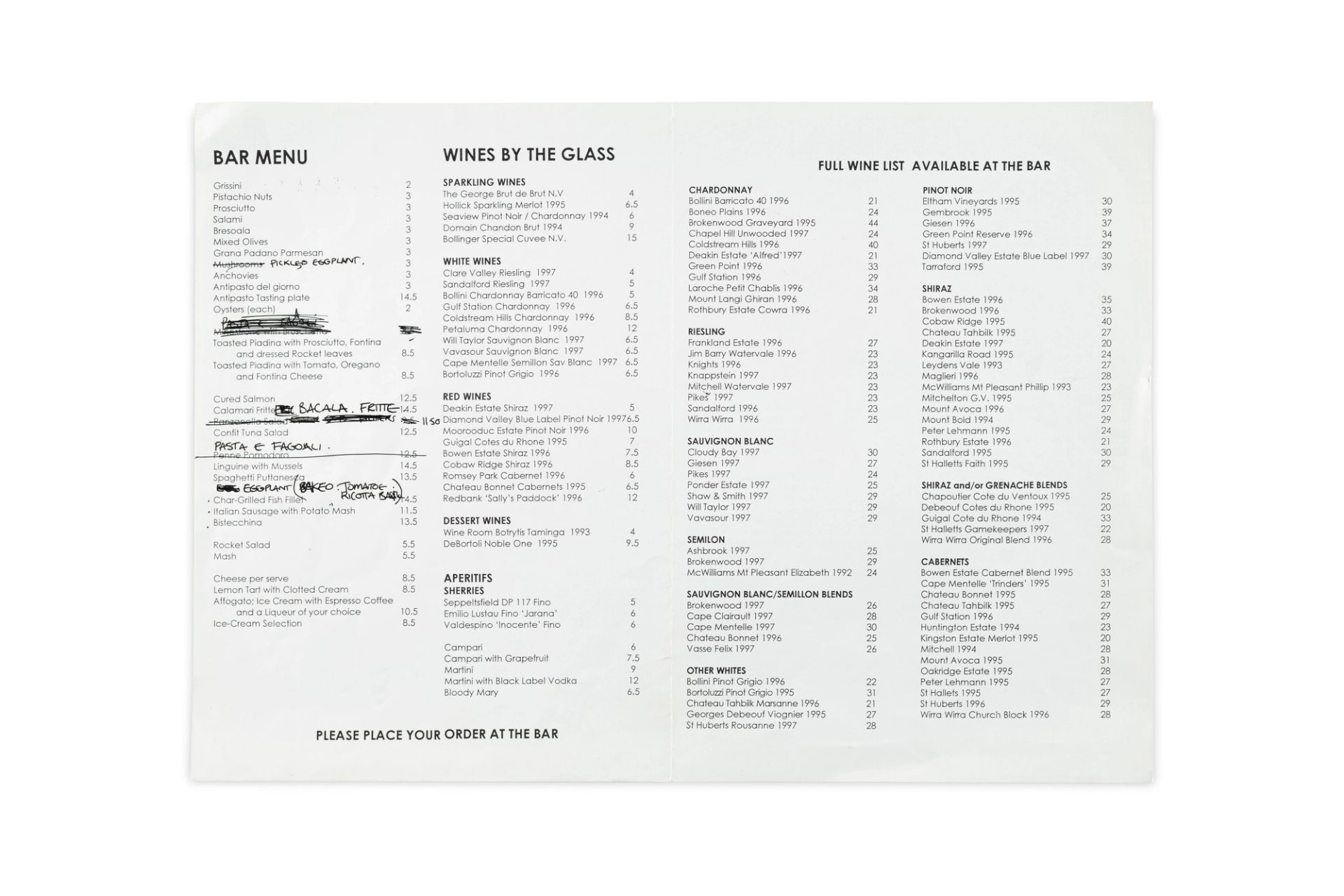
JG That was a good place to land, wasn’t it?
KM A fabulous entry point. The French foundations of technique, everything from pastry to making bavarois and ice-cream. And boning hares and pheasants and skinning eels and all the things that young kids in the average café or restaurant won’t come across these days. I worked my way up to sous chef at Tansy’s at Spring Street. The kitchen was a fast and furious place, very long ‘prac’ lists. Chefs came and went like a swinging door.
At age 20, I travelled overseas for six months, spent all the money I saved. I went to Italy and France for the first time, ate and discovered, and I was in heaven. I remember standing in what would be your normal local deli cafe in Paris with my baguette, cheese and two stuffed artichokes all wrapped up in the most amazing brown paper and string and going, ‘Imagine if this could happen in Australia’.
I fell in love with that culture. I would walk the streets listening to people shopping at the markets. I was staying in a hostel and the last week before I flew back to Melbourne spent the last of my money in fancy hotel restaurants. I talked some poor schoolteacher who was travelling into coming with me and said, ‘Look, I’ll even pay for half of it. I can’t sit here on my own’. Just for the experience of sitting in a restaurant with gilded mirrors.
I managed to stumble my way through bad culinary French to order, couldn’t afford dessert. I think the waiter felt sorry for us and gave us a splash of wine whenever we ordered because he could see that I was just savouring every single moment, lapping it up. That was incredible, a turning point.
Then I came back and stumbled into Haskins, a small hotel in North Fitzroy, and that led to a head chef position with Gerald Diffey at the Kent Hotel in Carlton, a new gastropub. Together with my friend Rita Macali, we were recognised and written up, feeding the likes of Ronnie Di Stasio, Donlevy Fitzpatrick and Maurice Terzini. Which led to being offered the position at Melbourne Wine Room, in The George, in St Kilda, in 1996. Donlevy and Maurice at Melbourne Wine Room was a game-changer in its day.
JG It sure was.
KM Cleanskin wines. Amazing, rustic food. Italian-based from the roots. We had a charcoal grill and lit a fire every day. I know everyone’s making a big deal about fire; we used fire back then, one of the best and most primitive ways of cooking. Whole fish, 600g rib-eye steaks and big bowls of seafood brodetto put me on the map. And a very delicious, ancient recipe for squab, braised with cinnamon, Byzantine-style spices, on wet polenta, the whole bird falling apart.
At the same time, the Brit Pack had come to Melbourne — the likes of Jeremy Strode, Ian Curley, Michael Lambie, Donovan Cooke — so you’ve got that going on and then you had me and other chefs cooking in a more rustic style. I’m always chasing flavour, but back then I was using the foundations of French cookery and those techniques to execute dishes that were a simpler presentation.
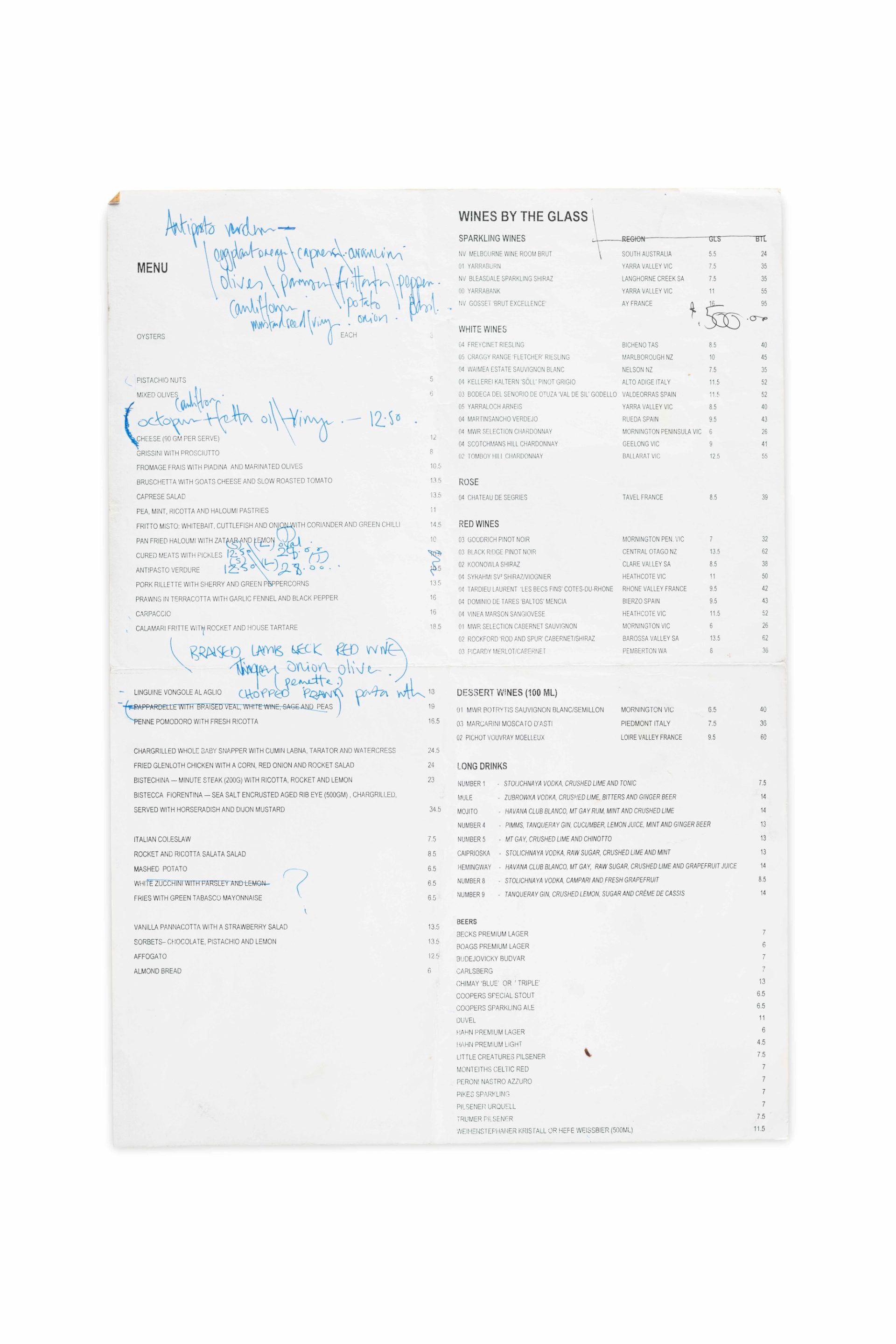

JG I’ve always thought of you being the flavour queen — you can get flavour into dishes without adding 20 more ingredients.
KM It’s a really easy stepping stone for me. In my book Cook I worked out that it’s about crystallising ideas for people to understand how you take it from here to there and develop those steps. I’m constantly hungry and that has never left me, so there’s always curiosity to learn something else. After eight years at the Melbourne Wine Room, I went to Sydney with Maurice Terzini and we did Icebergs.
JG One of the most beautiful restaurant rooms in the world, isn’t it?
KM That room has a sense of occasion and pride. A wave of relaxation automatically rolls over you because you’re looking at Bondi. It was a fabulous space to showcase Australian produce at its best.
JG It went off, didn’t it?
KM Yeah. It was best new restaurant and we won a hat within 10 months. While I was at Icebergs for two years working extraordinary hours, I was overseeing Melbourne Wine Room at the same time. It was very demanding and challenging, but it did put me smack bang in the middle of the culinary industry in Sydney, and also in Melbourne.
JG And then you come back from Icebergs and it was Mr Wolf after that?
KM I was working very hard, long hours in Icebergs, up to 100-hour weeks when we first opened. That’s what a restaurant needs. It’s like a baby: it needs you the whole time. And then towards the end of two years, I was pretty tired. I wanted to come home to [husband] Michael and open a pizza restaurant, Mr Wolf, in St Kilda, which we had for 16 years.
JG It’s important to mention your partnership with Michael Sapountsis, because he’s very much there with you making all this happen, isn’t he?
KM Very grounding. A devil’s advocate at times. He keeps me anchored, but also he is the inspiration for all things beautiful and he loves a fine life and good food and loves the hospitality industry. So it really does flow in our veins. We have this beautiful balance. It’s been 28 years together now. The conviviality of food is something that’s really important to me and how food is connected to nurturing, the socialisation of your family, but also them enjoying good food is something that you will think about the next day and then work on your next meal.
JG You have that classic, rigorous, high-end restaurant training, but you really understand the domestic kitchen and how to get maximum flavour. The other strand to your career is writing books, being on television, in the newspaper, in magazines.
KM Yes. I started writing and I was approached to present those fresh flavour-driven ideas on TV. For a test to camera, I did a crab spaghettini with fresh crab, snipped herbs and oil scented with lemon, garlic, herbs and chilli. It’s simple, but it’s all about the finesse of what goes in and the timing of warm pasta and the quality of the crabmeat. If I managed to get one person off the couch and they actually cooked something, my job was done.
This interview was first published by The Saturday Paper.
About
Karen Martini is an award-winning chef, restaurateur, author and television presenter. Her food message is drawn from her professional cooking career, her Tunisian-Italian heritage and from the challenges of feeding nutritious and stimulating food to her family.
Julie Gibbs is the curatorial adviser to the Australian Culinary Archive, a major initiative of Powerhouse Museum, collecting and preserving the stories and archives of Australia's leading chefs and producers. In her extensive career in book publishing Julie has given voice to and published works by our chefs, cooks and food writers.
Australian Culinary Archive
Established by Powerhouse in 2020, the Australian Culinary Archive is a living, evolving repository of our food industry: the chefs and cooks, food producers and vendors, writers and photographers, critics and diners whose hunger for innovation has coalesced over the decades into a vital sphere of cultural production. It is a storehouse for oral histories, written records, photographic documentation and unique artefacts that attest to the passion and distinction that typify this vast sector.
Led by Julie Gibbs, who has published a long list of Australian cookbooks in a 35-year career, the Australian Culinary Archive oral history archive brings together voices from across the food industry — from renowned professional chefs to community and household cooks as well as those that support and celebrate them.
More
Powerhouse Food
Powerhouse Food examines food within the context of history and how its connectedness draws together land, creatures, people, roads, factories, markets and waterways, sustaining us and holding our futures.













